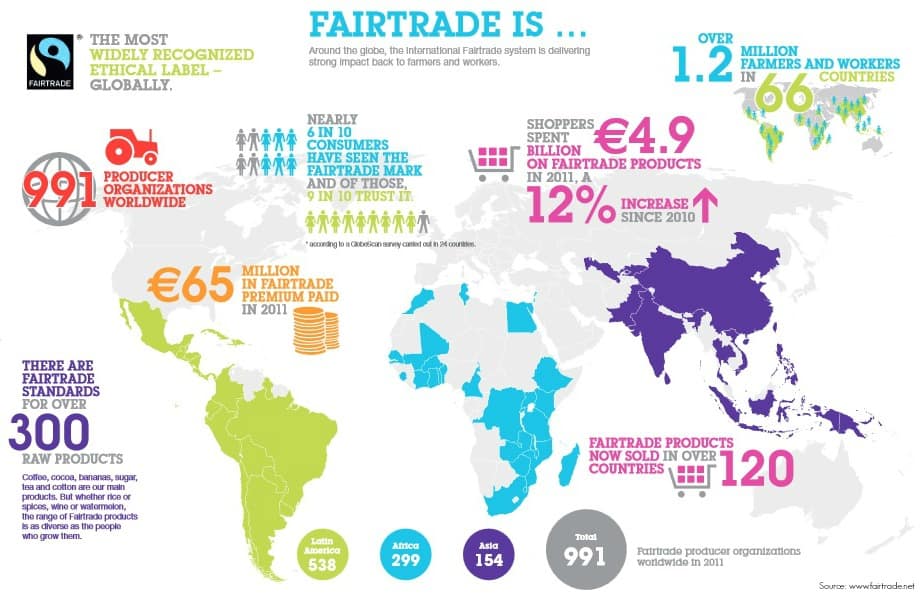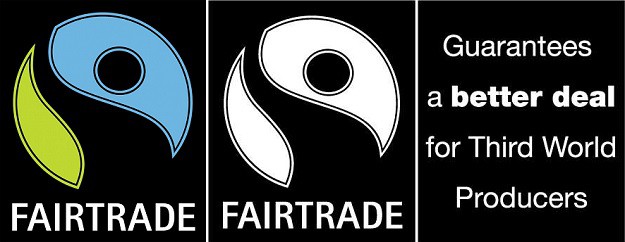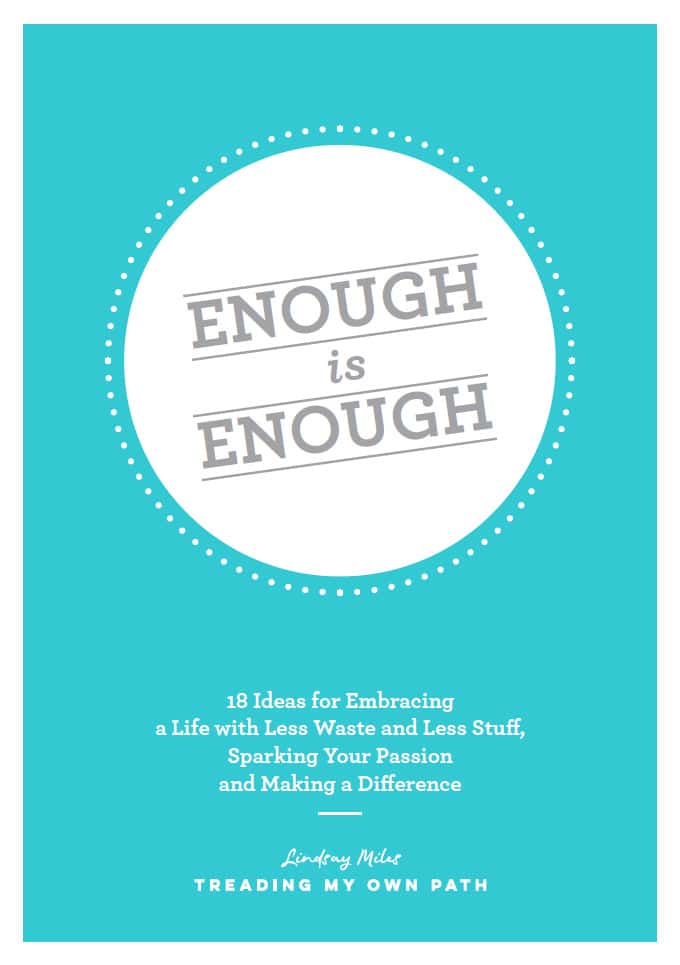Fair Trade: what it means, what it does, and how you play a part
Last Friday I attended the Fairly Fashionable? event, where local fashion designers created garments using Fair Trade fabric to raise awareness of ethical fashion. I was telling some new friends about it, and one of them asked me:
“What is Fair Trade?”
Good point! Whilst you probably know (or could guess!) it means that workers getting paid a fair price for the goods that they produce, there’s actually a bit more to it than that.
What does “Fair Trade” Mean?
Fair Trade is all about better prices, yes, but it’s also about decent working conditions, local sustainability, and fair terms of trade for farmers and workers in the developing world.
The movement came about after people recognized that conventional trade wasn’t providing fair wages and sustainable livelihoods for the world’s poorest people. Poverty and hardship make these workers more vulnerable to exploitation by limiting their choices, access to markets and negotiating power.
The idea with Fair Trade is that farmers or workers are paid a higher price for their goods or services, and this cost is passed onto the consumer, who will pay more for a product that has been fairly traded.
There’s no one definition of Fair Trade; there are many different organisations who promote Fair Trade, and they have different standards and criteria. The 10 principles listed by the World Fair Trade Organisation (WFTO), which Fair Trade organisations are expected to follow, are excellent for explaining what Fair Trade companies across the globe strive to achieve.
The 10 Principles of Fair Trade
Principle 1: Creating Opportunities for Economically Disadvantaged Producers
Principle 2: Transparency and Accountability
Principle 3: Fair Trading Practices
Principle 4: Payment of a Fair Price
Principle 5: Ensuring no Child Labour and Forced Labour
Principle 6: Commitment to Non Discrimination, Gender Equity and Women’s Economic Empowerment and Freedom of Association
Principle 7: Ensuring Good Working Conditions
Principle 8: Providing Capacity Building
Principle 9: Promoting Fair Trade
Principle 10: Respect for the Environment
(You can read a full description of these principles here)
How does Fair Trade Work?
Fair Trade has existed since WWII, but was more focused on handicrafts in the beginning, with products sold solely from Fair Trade shops (also called worldshops) and churches. From the 1980s there was a shift towards the fair trade of agricultural products, and the idea of certification came about.
Certification was introduced in 1988; the first certified Fair Trade product was coffee.The idea behind certification was that it allowed consumers to recognize which products gave farmers a premium price for their crops and followed Fair Trade principles. This meant products could be sold in mainstream shops such as supermarkets rather than specific Fair Trade shops. Certification has allowed the reach of Fair Trade to grow massively, and more customers means more farmers can benefit.
How does certification work? An independent organisation certifies that the commodities used in a product meet Fair Trade standards, and manufacturers pay for the right to use a logo. This tells consumers that the product meets certification standards for Fair Trade.
The FAIRTRADE Mark
The FAIRTRADE Mark is probably the most famous Fair Trade logo: it’s currently used in over 50 countries and is attached to over 27,000 products. It’s an independent certification mark that guarantees a product has been produced according to international Fair Trade standards. It shows that the product has been certified to offer a better deal to the farmers and workers involved.
Certification schemes with logos that people recognize mean that products can be stocked in supermarkets where high volumes of products can be sold. It is estimated 90% of consumers trust the FAIRTRADE Mark – and this confidence means higher sales.
Whilst the FAIRTRADE Mark is the world’s biggest Fair Trade certification scheme, it’s not the only one. Different certifiers will have different standards and procedures, but all promote Fair Trade.

Logos from Fair Trade USA (left and second left), the Fairtrade Federation and the World Fair Trade Organization
Not all Fairly Traded products are certified, either. Remember that participating in a Fair Trade certification scheme costs money. Some organisations that work with small cooperatives to produce Fair Trade products may not have the resources to certify their products; but that does not mean they don’t adhere to Fair Trade principles. Most businesses selling Fair Trade products want to be as transparent as possible, so if in doubt, just ask questions.
What Can We Do to Support Fair Trade?
Buy Fair Trade products! Simple as that! The most common products are coffee, chocolate, sugar and bananas, and you’ll be able to find these in supermarkets. Health food stores and independent grocers will probably have a wider range.
Start with just one product that you buy that has a Fair Trade alternative, and make the switch. Last year I switched to only buying Fair Trade chocolate. The market for Fair Trade products continues to grow every year, and the more we support it, the more this growth will continue.
 For more information on Fair Trade, and to see how you can support Fair Trade in your area, check out these great websites:
For more information on Fair Trade, and to see how you can support Fair Trade in your area, check out these great websites:
World Fair Trade Organization
Fairtrade International
Fairtrade Australia and New Zealand
Fairtrade Foundation (UK)
Fair Trade USA
Do you already buy Fair Trade products? Are you new to Fair Trade but willing to make the switch? I’d love to hear your thoughts so please leave a comment below!
[leadpages_leadbox leadbox_id=1429a0746639c5] [/leadpages_leadbox]







Thanks for the interesting article!
While Fair Trade has many benefits, getting certification is expensive, something I learned in this post: https://stephinghana.wordpress.com/2015/04/29/making-sure-that-shea-butter-is-turned-into-gold/
Steph worked with Tama Cosmetics and various womens groups over the span of two years in Northern Ghana. In the “So how can you tell if your shea butter is ethical?” section on that page I linked to, Steph says “Third party accreditations such as Fairtrade or organic are [also] good indicators but bear in mind that getting these accreditations can be prohibitively expensive for African businesses.”
I.e. Fair Trade is fair once you have the money to get accreditation, but until then, it is not as fair as one would like, for those small businesses who want to make their way into the international market.
http://obibinibruni.org/
Great article but it would be wonderful to see BAFTS have a mention as we are a member organisation of fair trade shops and suppliers in the UK. We ourselves are WFTO members, and our members must show transparency and future aims in accordance with the WFTO 10 principles. You start by mentioning that fair trade focussed first on handicrafts and say later that not all products are certified (costs etc) but don’t explain that we exist to help set criteria for shops and suppliers dealing in handicrafts primarily. If you would like to discuss this pls email me on membershipsupport@bafts.org.uk and I would be happy to discuss. Kathryn
How can new coffee farmers benefit